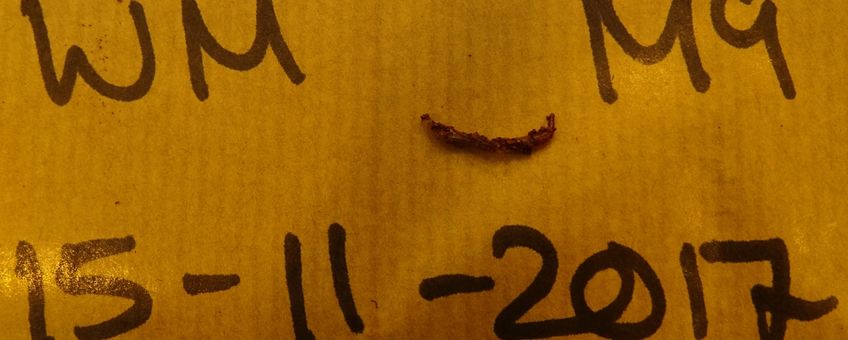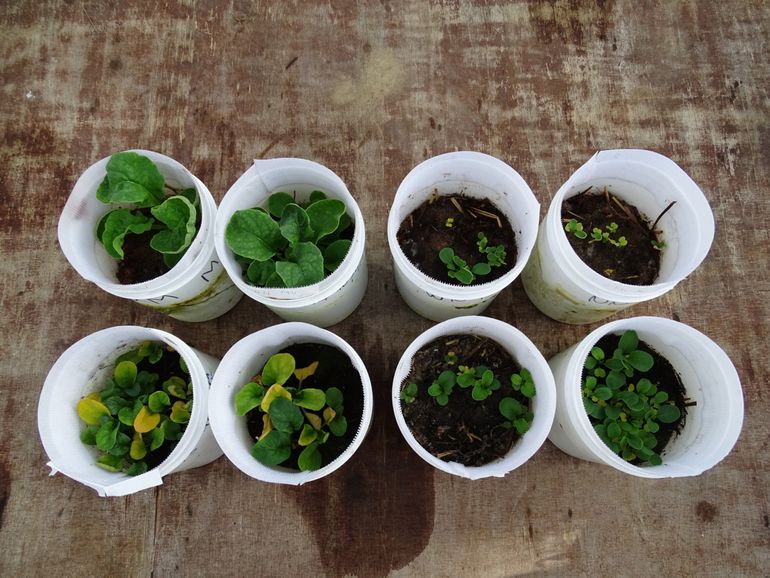
Earthworms can reproduce in Mars soil simulant
Wageningen Environmental ResearchTo feed future humans on Mars a sustainable closed agricultural ecosystem is a necessity. Worms will play a crucial role in this system as they break down and recycle dead organic matter. The poop and pee of the (human) Martian will also have to be used to fertilise the soil, but for practical and safety reasons we are presently using pig slurry. We have since been observing the growth of rucola (rocket) in Mars soil simulant provided by NASA to which worms and slurry have been added. ‘Clearly the manure stimulated growth, especially in the Mars soil simulant, and we saw that the worms were active. However, the best surprise came at the end of the experiment when we found two young worms in the Mars soil simulant’, said Wieger Wamelink of Wageningen University & Research.
‘The positive effect of adding manure was not unexpected’, added Wamelink, ‘but we were surprised that it makes Mars soil simulant outperform Earth silver sand’. We added organic matter from earlier experiments to both sands. We added the manure to a sample of the pots and then, after germination of the rucola, we added the worms. We therefore ended up with pots with all possible combinations with the exception of organic matter which was added to all of the pots.
Worms are very important for a healthy soil, not only on Earth but also in future indoor gardens on Mars or the moon. They thrive on dead organic matter such as old plant remains, which they eat, chew and mix with soil before they excrete it. This poo still contains organic matter that is broken down further by bacteria, thus releasing nutrients such as nitrogen, phosphorous and potassium for use by the plants. By digging burrows the worms also aerate and improve the structure of the soil, making watering the plants more effective. The latter proved to be very important in earlier experiments where water would not easily penetrate the soil. Wamelink confirmed that: ’the application of worms will solve this problem’.
To feed the future humans living on Mars or the moon the project Food for Mars and Moon aims to set up a sustainable agricultural system. It is based on the presence of soils and water (in the form of ice) on both Mars and the moon, and for the Earth-based research we are using soil simulants delivered by NASA. The simulants originate from a volcano in Hawaii (Mars) and a desert in Arizona (moon). The experiments started in 2013. Nowadays we are able to grow over a dozen crops, the only species that has resisted our efforts so far is spinach. However crops such as green beans, peas, radish, tomato, potato, rucola, carrot and garden cress all seem possible. The crops were analysed for heavy metals and also alkaloids to check their safety for human consumption. After passing these tests we organized a dinner based on the harvested crops for the people that supported our research via the crowdfunding campaign.
Text and photos: Wieger Wamelink, Wageningen Environmental Research
More information:


